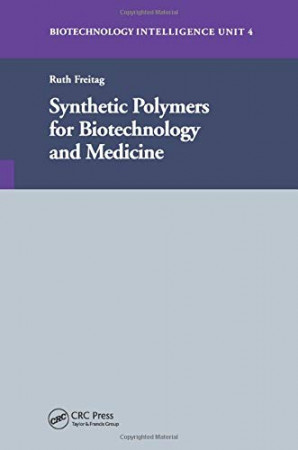Synthetic Polymers for Biotechnology and Medicine - Biotechnology Intelligence Unit 4
Keterangan Bibliografi
| Pengarang | : Freitag, Ruth (editor) |
| Pengarang 2 | : |
| Kontributor | : |
| Penerbit | : Eurekah.com |
| Kota terbit | : Texas |
| Tahun terbit | : 2003 |
| ISBN | : 1-58706-081-7 |
| Subyek | : Polimers in medicine |
| Klasifikasi | : 610.28 Fre s |
| Bahasa | : English |
| Edisi | : |
| Halaman | : 171 hlm.: ilus. |
Jenis Koleksi Pustaka
E-Book
Kategori Pustaka
Tidak ada kategori
Abstraksi
Synthetic polymers fulfill many functions in biotechnology and medicine. Cross-linked polymer networks are used for drug delivery and cell encapsulation. The idea for this book was first conceived during discussion amongst some of the people at the Swiss Federal Institute of Technology in Lausanne, which use synthetic polymers for some of the above-mentioned purposes. We found that the quality and the properties of these materials were in many cases decisive for the research that could be done with them. The book starts with two chapters on the delivery of biologicals using synthetic polymers. The chapter on cell encapsulation treats this important subject by taking the bioartificial pancreas as an example. The chapter on gene delivery focuses on the many barriers which nature developed to prevent the genetic modification of cells. Viruses are natural and extremely efficient means of overcome these barriers. Unfortunately, they have in the past given raise to some ethical questions regarding the safety of their use. Artificial polymers will hopefully one day replace these viral systems for the genetic modifications of cells. The second section of the book deals with the use of synthetic polymers for the purpose of isolating biologicals (bioseparation). The chapter on affinity precipitation describes the use of stimulus-responsive polymers for this purpose. Upon the change of a certain external parameter like the temperature or the pH, such polymers change their behavior, e.g., their solubility in water, in a very abrupt manner. If the polymer is linked to an affinity mediator, any target molecule can be captured and co-precipitated. The issue of stimulus-responsive (sometimes also called “smart”) polymers is taken up again in chapter 6. In this chapter a common problem in tissue engineering is addressed. If cells are to be grown on a surface, this surface should have a hydrophilic quality. However, what is good for growth may later become a severe handicap, when the goal is to remove the cells for their final application. Many cells do not react well to the agents commonly used for that purpose. The hydrophobicity of a surface covered with stimulus-responsive polymers, on the other hand, may be changed almost at will by stimulation with a suitable agent. Cells have been known to detach on their own, once a formerly hydrophilic surface had become hydrophobic due to a slight increase in temperature. Other applications of such stimulus-responsive surfaces may be found in bioseparation and drug delivery. The final chapter of the book deals with molecular imprinting as a means to give to polymeric surfaces the ability to distinguish between closely related molecules, which normally is only found in biological compounds such as enzymes.
Inventaris
| # | Inventaris | Dapat dipinjam | Status Ada |
| 1 | 9265/P1/2020.c1 | Ya | |
| 2 | 9266/P1/2020.c2 | Ya | |
| 3 | 9267/P1/2020.c3 | Ya | |
| 4 | 9268/P1/2020.c4 | Ya | |
| 5 | 9269/P1/2020.c5 | Ya | |
| 6 | 9270/P1/2020.c6 | Ya |
